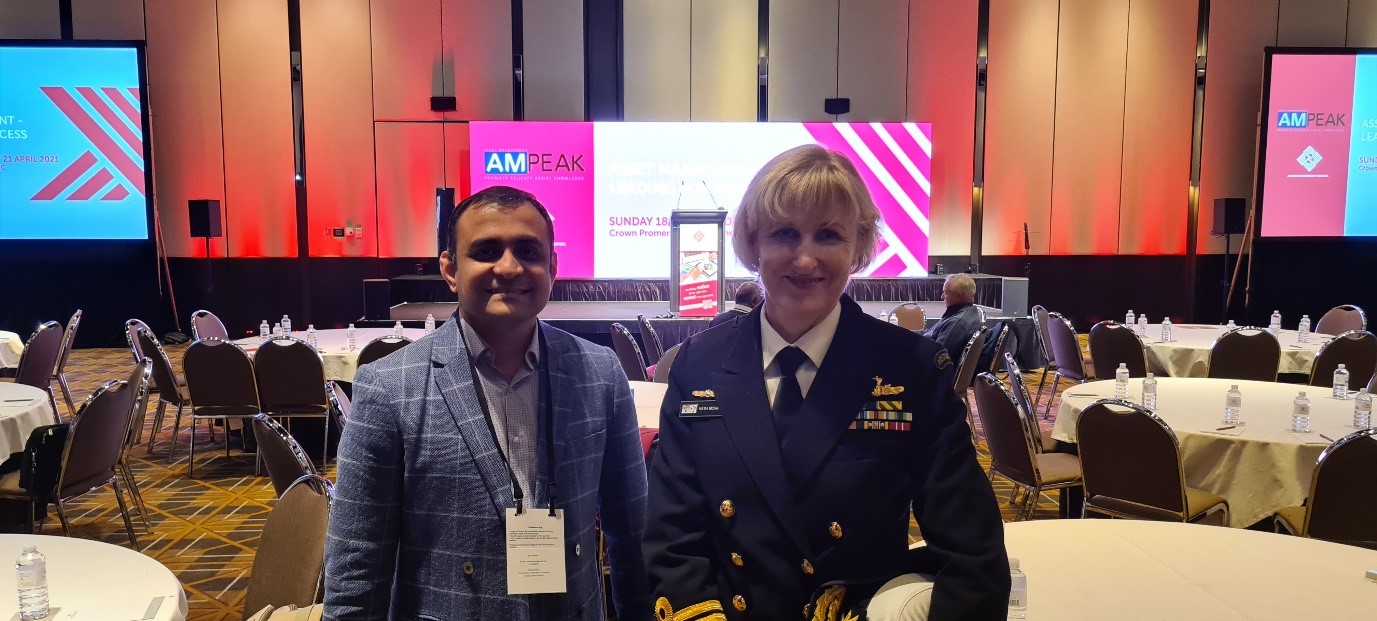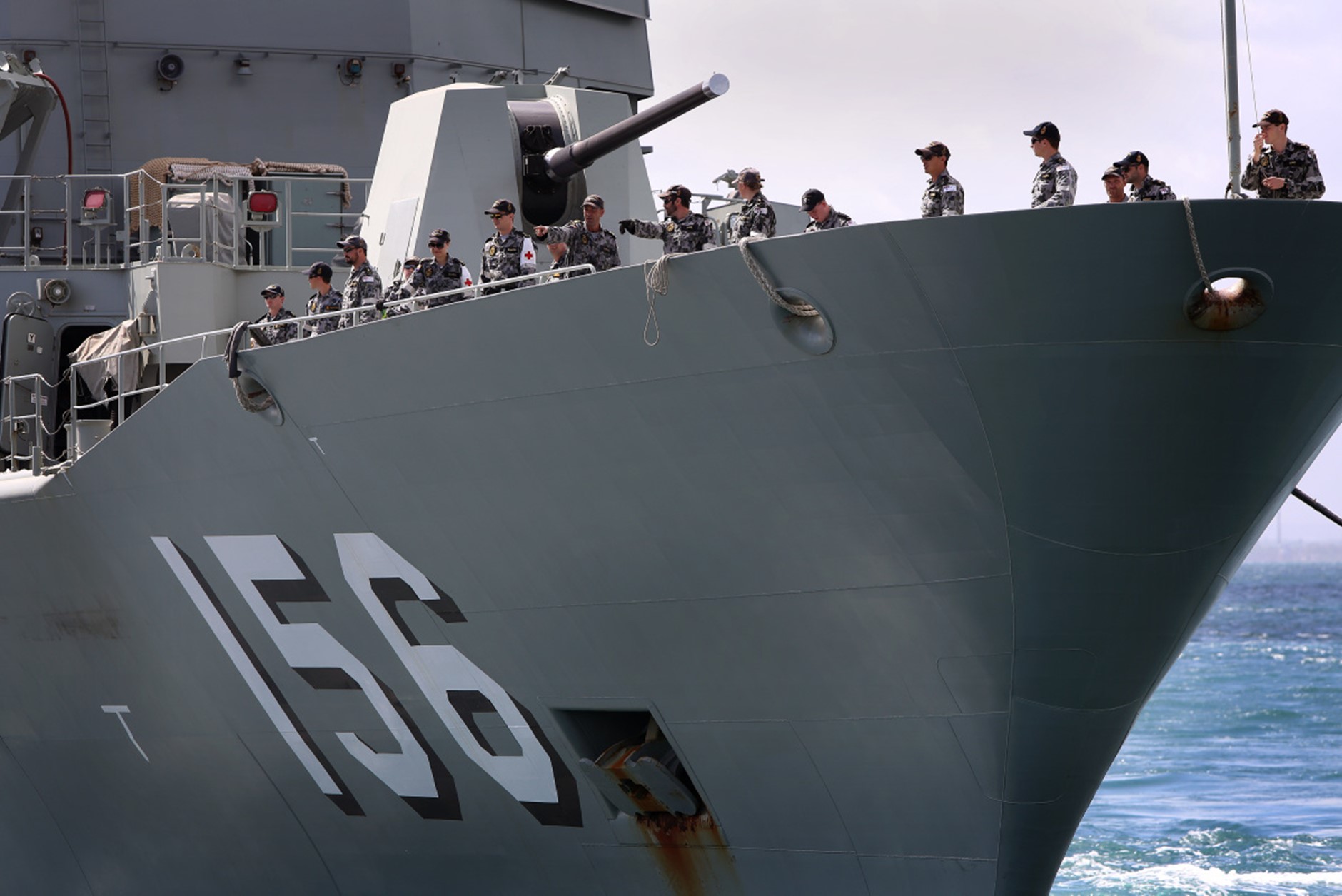I recently got the opportunity to attend Asset Management Council of Australia’s AMPEAK conference. It has been a great experience interacting directly with the true practitioners of Asset Management, and understanding some of the technology challenges that they are experiencing. One of the sessions that caught my attention was led by Rear Admiral Katherine Richards, AM, CSC, RAN, the head of Royal Australian Navy’s Engineering division on Defence Seaworthiness. Below are some of the notes from that session.

~ Carol with Rear Admiral Katherine Richards, the head of Royal Australian Navy’s Engineering division ~
Defence Seaworthiness Management System
The Trigger
The amphibious ships of the Navy could not respond adequately to the search and rescue operations conducted during Cyclone Beni that ravaged parts of Queensland coasts; this was deemed as a major setback for Navy’s credentials to assist in domestic operations. A commission was instituted under the chairmanship of Mr. Paul Rizzo to review the Navy’s capabilities, particularly that of its engineering division. The Rizzo Review recommended to ‘rebuild Navy Engineering’; not just reorganise or fix it but rebuild the capability entirely from the ground up.

Why DSwMS?
Before the Defence Seaworthiness Management System, vessels were managed and regulated under a number of different regulatory bodies. Now, with the DSwMS in place, these vessels are regulated by one system.
The regulatory system now defines Capability Managers’ obligations both in managing the seaworthiness of their maritime mission systems, and ensuring that they have appropriate governance frameworks in place. There are currently two types of regulations:
Governance Compliance Obligations
Two of the key goals defined under the Governance Compliance Obligations are,
- Incident Response: This would entail emergency, incident and accident response, management, and investigation functions.
- Align realised systems with design: Systems are realised consistent with the approved design.
Activity and Condition based Compliance Obligations
Activity and Condition based Compliance Obligations align closely with asset management practices, and are meant to address the management of hazards and risks at the mission system level. One of the key goals in this category are to achieve appropriate propulsion and maneuverability through range, speed, position, and orientation requirements. Another would be to establish processes and systems for the carriage and handling of ordnance and dangerous goods.
Overall, I should say, it was great session providing insights into some of the key requirements and challenges that the Navy’s engineering division is faced with.
If you have any questions or comments about the contents of this blog, please contact BPD Zenith.




